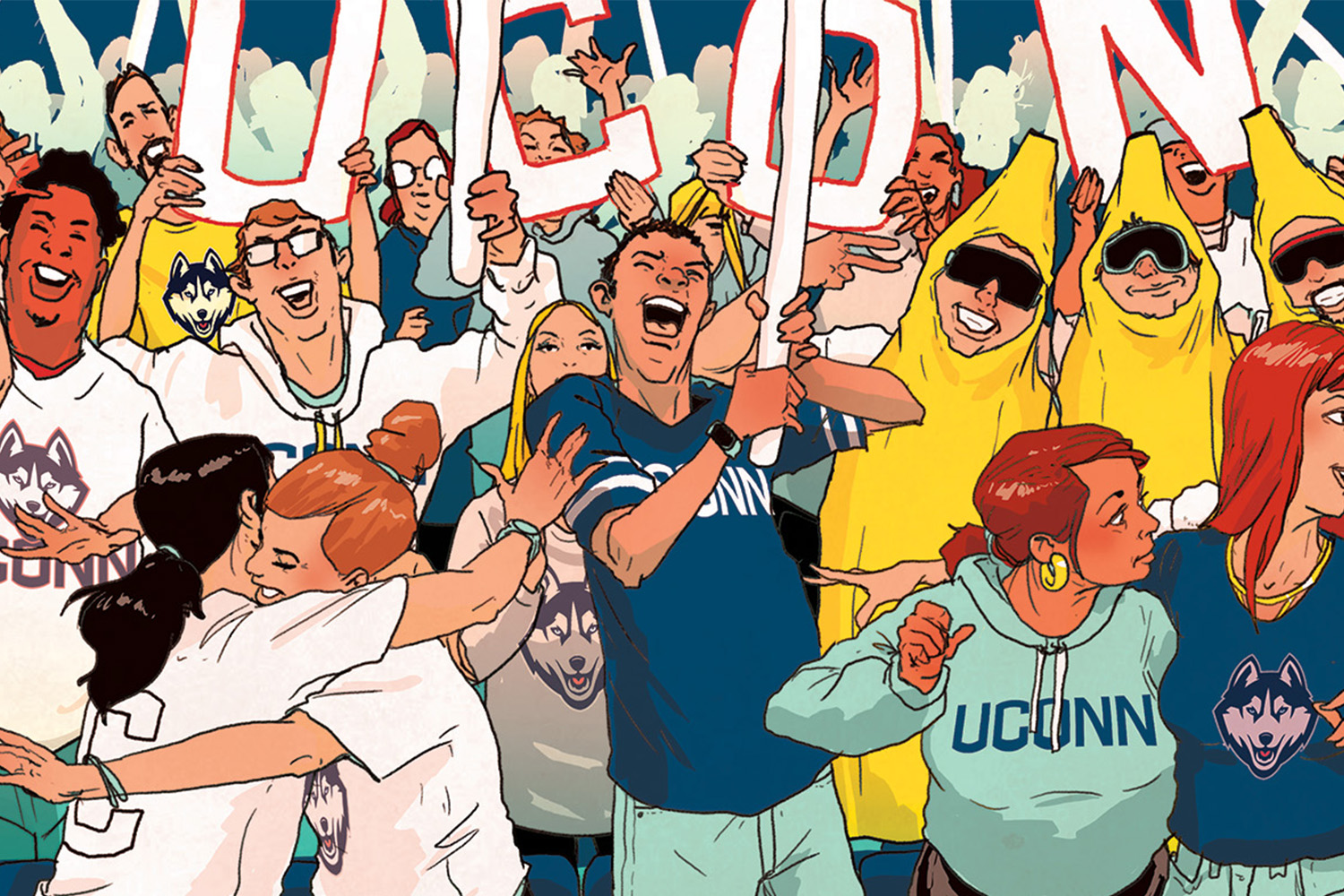Whether you love it or struggle with it, mathematics is the language of the universe. And, since all STEM students at UConn need to take calculus, both types of students come into the classroom.
No matter what category they fall into, visualization tools can help in the learning process, says David Nichols, a Ph.D. student and teaching assistant in UConn’s Department of Mathematics.
Just not his own drawings.
“I’m not really good at drawing things by hand,” Nichols says.
Once, having spent several minutes at a chalkboard, carefully drawing a figure in multivariable and vector calculus, Nichols turned to his students and asked them if they recognized what he had drawn. They shook their heads ‘no.’
Since then, Nichols has been busy making visual aids to help convey mathematical concepts to students and improve their learning experience.
Early on, he partnered with Amit Savkar, associate professor-in-residence in mathematics, and began experimenting with online software. Nichols says it was very much a learning experience, in which he would learn the skills and techniques necessary to prepare the interactive visualizations for the lectures he would be giving each week.
The original visuals he created were mainly just to replace his own hand-drawn figures, but the project developed into something bigger once he noticed how helpful they were, for him and for his students. Word spread and other instructors began to use the visuals to supplement their own lectures.
Now many instructors within the department are using the visuals Nichols and Savkar created to convey concepts. Even former students come to Nichols for visuals they can use in higher level classes and he is now working to expand the availability of the tools for other math classes.
Nichols is also working to improve existing demonstrations, to ensure that they are accessible to as many students as possible by using high contrast colors and patterns for the visually impaired and color palettes that are easily discernible by colorblind students.
Though he has never had any complaints about the accessibility of his visualizations, he knew that statistically, there must have been some students not able to see all of the distinctions he meant for them to see due to color blindness and visual impairment rates in the population.
“I’ve always tried to find ways to teach creatively and always improve upon what I’m doing,” says Nichols. “Some of my best instructors taught me that teaching is an iterative process, and to find new and fun ways to convey what you are teaching.”
He never considered how much fun it would be to use software to create these interactive visual aids, but says he has really caught the bug for designing them, and that it may become a future career focus:
“It’s a valuable tool to me, and it’s valuable to my students, and I have a lot of fun doing it.”
This project was funded in part by UConn’s Center for Excellence in Teaching and Learning.


